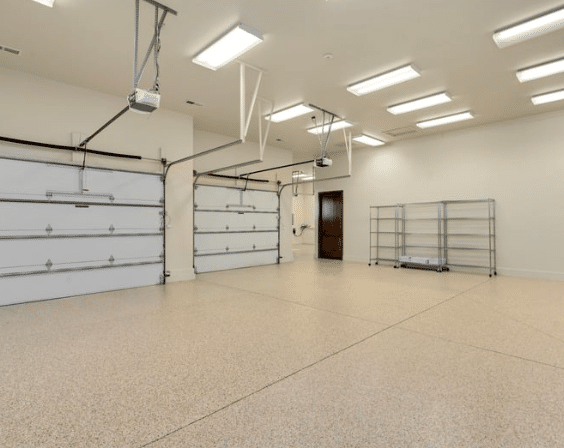Looking for the ultimate guide on how to replace garage door opener batteries in New Braunfels, Texas? We cover everything you need to know, from identifying the battery to ensuring proper disposal.
If you’ve ever been stuck outside your garage in the Texas heat because your remote suddenly stopped working, you’re not alone. The culprit is most likely a dead battery. Learning how to replace garage door opener batteries in New Braunfels, Texas, can save you time, money, and frustration in the future.
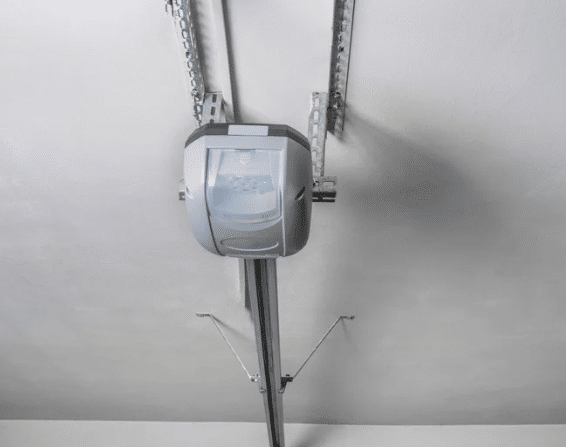
In this guide, we’ll take you through the simple steps to replace your battery. Whether you’re a DIY enthusiast or just looking to save on repair costs, we’ve got you covered. Follow our detailed instructions, and you’ll never have to worry about a malfunctioning opener again, thanks to New Braunfels Garage Door in New Braunfels, Texas.
Why Garage Door Opener Batteries Matter
You might think it’s just a tiny battery—how big of a deal can it be? Well, when it comes to your garage door opener, that small component makes a big difference in your day-to-day life. In many homes, especially in New Braunfels where garages often serve as the main entrance, your garage door remote is practically your front door key.
Here’s why a strong battery matters:
- Convenience: No one wants to run inside, grab the wall remote, or lift a heavy door manually.
- Security: A dead battery could mean leaving your car outside overnight, vulnerable to weather or theft.
- Stress-Free Living: Consistent battery power means one less thing to worry about when you’re heading out.
This isn’t just about garage access—it’s about maintaining your home’s security and convenience with minimal effort.
Signs Your Garage Door Opener Battery Needs Replacing
Sometimes, the symptoms of a dying battery can be subtle. But if you pay attention, your remote often tries to warn you.
Let’s break it down further:
- Delayed Reaction: If your garage door takes longer than usual to respond when you hit the button, that lag is likely your battery gasping for life.
- Range Shrinkage: If you used to open your garage from halfway down the street but now need to be right in front of it—yep, that’s a battery issue.
- Dim or Flickering LED: Some remotes have a small light that glows when you press the button. If it’s flickering or faint, the power’s fading fast.
- Complete Silence: No noise. No click. No movement. If the remote is silent and the wall panel works, you’ve got a dead remote battery on your hands.
Being able to spot these signs early on can save you the hassle of troubleshooting other parts of the system unnecessarily.
Types of Garage Door Openers in New Braunfels
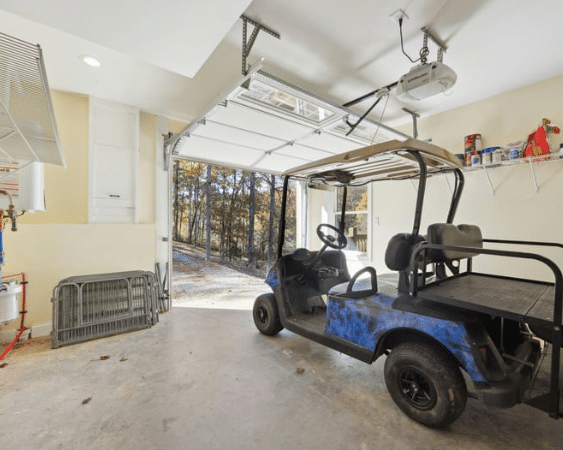
Understanding the type of garage door opener you have isn’t just helpful it’s essential. Why? Because not all remotes or battery types are created equal.
Let’s dive into the opener types a bit deeper:
Chain-Drive Openers
- Common in older or budget-friendly homes
- Known for their durability
- It can be a bit noisy—so it is not ideal if your bedroom sits above the garage
Belt-Drive Openers
- Popular in modern New Braunfels builds
- Smooth and quiet—great if noise is a concern
- Often paired with smart features and newer remote models
Screw-Drive Openers
- Less common, but highly efficient in heat—perfect for Texas summers
- Fewer moving parts, so they require less maintenance
- Typically use higher torque for heavier or double garage doors
Smart/Wi-Fi Openers
- Found in homes that embrace tech
- Controlled via apps like MyQ or Aladdin Connect
- But remember: even these often have manual remotes as backups—those still need batteries!
Knowing your garage door opener type helps ensure you’re buying the right remote and battery when the time comes.
What You’ll Need Before You Begin
Preparation is key to a smooth battery replacement. Nothing’s worse than taking apart the remote and realizing you don’t have what you need.
Here’s your upgraded checklist:
Basic Tools
- Small flathead screwdriver: Most remotes have a snap-fit or screw closure.
- Phillips-head screwdriver: If your model is older, it might use screws instead of clips.
- Towel or mat: To work on so you don’t lose the battery or small screws.
Battery Type Guide

- CR2032 or CR2016: Common in compact remotes and keychain-style models.
- A23: Small cylinder batteries found in some LiftMaster or Genie remotes.
- AA/AAA: Used in larger universal remotes or keypad backups.
Extras (Optional, but Useful)
- Cotton swabs & rubbing alcohol: Clean the contacts if there’s any corrosion.
- Gloves: If you want to avoid skin oils getting on the battery (helps with longevity).
- Multimeter: If you want to test the voltage on old batteries for future reference.
Double-check the manual, or look inside the remote’s battery compartment for the battery model number. It’s usually engraved or printed on the plastic.
Safety Precautions
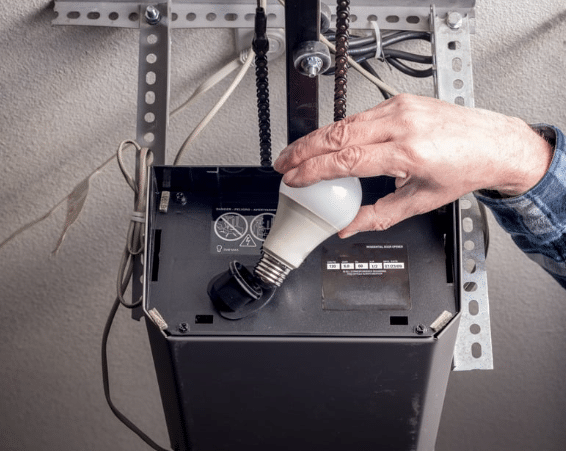
While replacing a battery sounds like a safe, everyday task, it never hurts to take a few safety steps—especially when you’re dealing with electrical components.
Here’s what to keep in mind:
- Unplug the Opener (if working near the unit): This protects both you and the opener from any electrical hiccups.
- Avoid Metal-to-Metal Contact: If you’re using tools, try not to touch metal parts to the battery terminals.
- Dispose of Batteries Properly: New Braunfels have proper disposal centers. Don’t toss them in the regular trash—they’re harmful to the environment.
- Keep Away from Kids & Pets: Some batteries, especially button ones, look like candy to little eyes. Store them high and out of reach.
And of course—always wash your hands afterward. Some older batteries can leak, and you don’t want that residue on your skin or food.
Step-by-Step: How to Replace Garage Door Opener Battery in New Braunfels, Texas
You already saw the simplified steps earlier—let’s break them down with more real-world guidance:
Step 1: Identify the Battery Type
The most reliable way to do this is:
- Look on the inside of the remote once opened.
- Check the owner’s manual.
- Visit the manufacturer’s website or use their support chat.
Still unsure? Bring the remote with you to Lowe’s or Home Depot. Most employees are happy to match batteries for you.
Step 2: Open the Remote
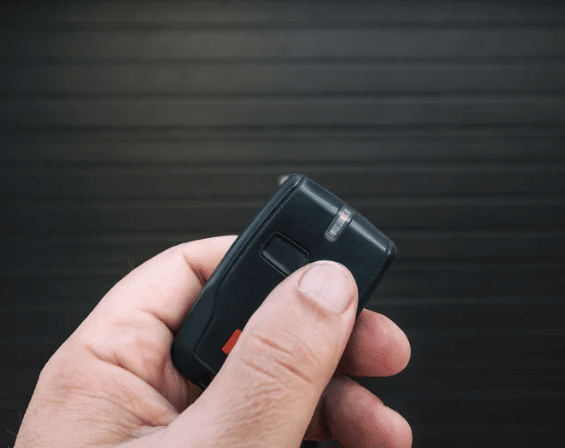
- Snap-Back Remotes: These usually pop open easily with a flathead.
- Screw-Back Remotes: Take your time—screws are often tiny, and they strip easily.
- Sliding Covers: Press down gently and slide—don’t force it.
Take a quick photo of the internal layout before removing the old battery. That way, you can double-check your installation later.
Step 3: Remove the Old Battery
Tilt the remote gently so the battery slides out. If it’s stuck, try using a cotton swab or plastic pry tool—avoid anything metallic that could scratch the circuit board.
Step 4: Insert the New Battery
Be sure to align the positive (+) and negative (-) ends correctly. Most remotes will have a small diagram or label inside to guide you.
Use gloves or hold the battery by the sides—your natural oils can reduce its effectiveness.
Step 5: Close the Remote
Press everything back into place and give it a gentle shake. If it rattles, it’s not fully secured. Tighten any screws if your model has them.
Step 6: Test It Out
Walk about 15 feet away from the garage and try the remote. If the door opens smoothly, you’re good to go!
What to Do If the Remote Still Doesn’t Work
Okay, so you did everything right—new battery installed, remote closed—and nothing happens. Don’t panic. Here are some extra steps to check before declaring the remote dead:
- Double-Check Orientation: Even experienced folks sometimes put batteries in backward.
- Reprogram the Remote: Look up how to resync your remote to the opener. It often involves holding down a “Learn” button on the opener unit.
- Reset the Opener: Unplug it for 30 seconds, then plug it back in to clear glitches.
- Inspect for Damage: Cracked circuit board? Broken contact spring? Time for a replacement.
- Try a Backup Remote: If that one works, your new battery may be faulty. Try another brand-new battery just to confirm.
If none of these solve the problem, it could be an internal remote failure—or the opener’s receiving sensor might be the issue.
Troubleshooting Tips for Common Issues
Not every garage remote behaves the same. If you’re scratching your head, here are some enhanced solutions to weird but common problems:
Remote Works Intermittently
- Fix: Clean both the battery contacts and the interior remote board with a cotton swab + rubbing alcohol. Dust or oxidation can cause inconsistent signals.
Door Opens Randomly
- Fix: Your neighbor’s remote might be interfering. Try changing the code settings or consult your opener’s manual for rolling code sync instructions.
Wall Button Works, Remote Doesn’t
- Fix: This usually confirms it’s a remote issue—not the opener. Reset or reprogram the remote again.
Remote Drains New Battery Quickly
- Fix: Check for stuck buttons or corrosion. Some remotes “short out” internally if a button is held down accidentally in a glove box or bag.
How Often Should You Replace Your Garage Door Opener Battery?
You might be tempted to wait until the remote stops working—but it’s better to be proactive. Here’s why:
Consider These Replacement Timelines:
- Once a Year: If you use your garage door daily (most homeowners do).
- Every 18–24 Months: If it’s a backup remote that lives in your second car or junk drawer.
- Before Winter or Summer Extremes: Extreme Texas temps (especially heat) wear batteries down faster. Change them ahead of the season.
It’s a small, once-a-year task that can save you from being late to work or locked out in the rain.
Frequently Asked Questions
Is there a reset button on a garage door opener?
Most modern garage door openers come with a reset button, typically located on the motor unit. This button helps to clear error codes or reset the system after a malfunction. To ensure optimal performance, refer to the owner’s manual for specific instructions on how to reset your opener.
How do I know if my garage door opener has a battery backup?
To check if your garage door opener has a battery backup, inspect the model number on the motor unit or the user manual. Openers with a battery backup feature a backup power system that allows operation during power outages. Look for “battery backup” or “UPS” on the packaging or specs.
Where is the battery in a garage door sensor?
The battery in a garage door sensor is typically located in the sensor unit on either side of the garage door. You may need to remove the cover of the sensor to access the battery. Always ensure the battery is properly installed to maintain the sensor’s functionality and signal.
How many volts is a garage door opener button?
A garage door opener button generally operates at 12 to 24 volts, depending on the model and manufacturer. Most standard opener buttons are low-voltage switches that trigger the motor to open or close the door. For accurate specifications, consult your opener’s user manual.
Why is the red light on my garage door opener still on?
A red light on your garage door opener often indicates a malfunction, such as a misaligned sensor, obstruction, or a safety feature being triggered. The light may also signal an issue with the motor or wiring. Consult the owner’s manual for troubleshooting steps and to resolve the problem efficiently.
Conclusion
Replacing the garage door opener battery in New Braunfels, Texas, is a simple DIY task that offers significant benefits. Not only does it save you time and money by avoiding unnecessary service calls, but it also ensures your garage door remains functional. Stay prepared for any weather conditions by making sure your opener works when you need it most.
If you’re ever in doubt or face more complex issues, don’t hesitate to reach out to a trusted garage door technician in New Braunfels. They can provide expert assistance for any repairs or maintenance. For now, though, you’re fully equipped to handle this small but essential task, keeping your garage door working smoothly year-round.
End note
New Braunfels Garage is dedicated to providing top-notch garage door solutions tailored to your needs in New Braunfels, TX. Whether it’s a new installation, repair service, or a weatherproofing project, we’ve got you covered. Explore our comprehensive garage door services and learn more about the products we trust, like LiftMaster. For expert garage door installations, visit Garage Doors New Braunfels, TX.
Stay in touch with us by visiting our Contact Us page to get started or find more helpful resources on our blog. Follow us on Facebook to keep up with the latest garage door trends and exclusive offers. Need repairs? We’re here to help with our professional garage door repair services.

